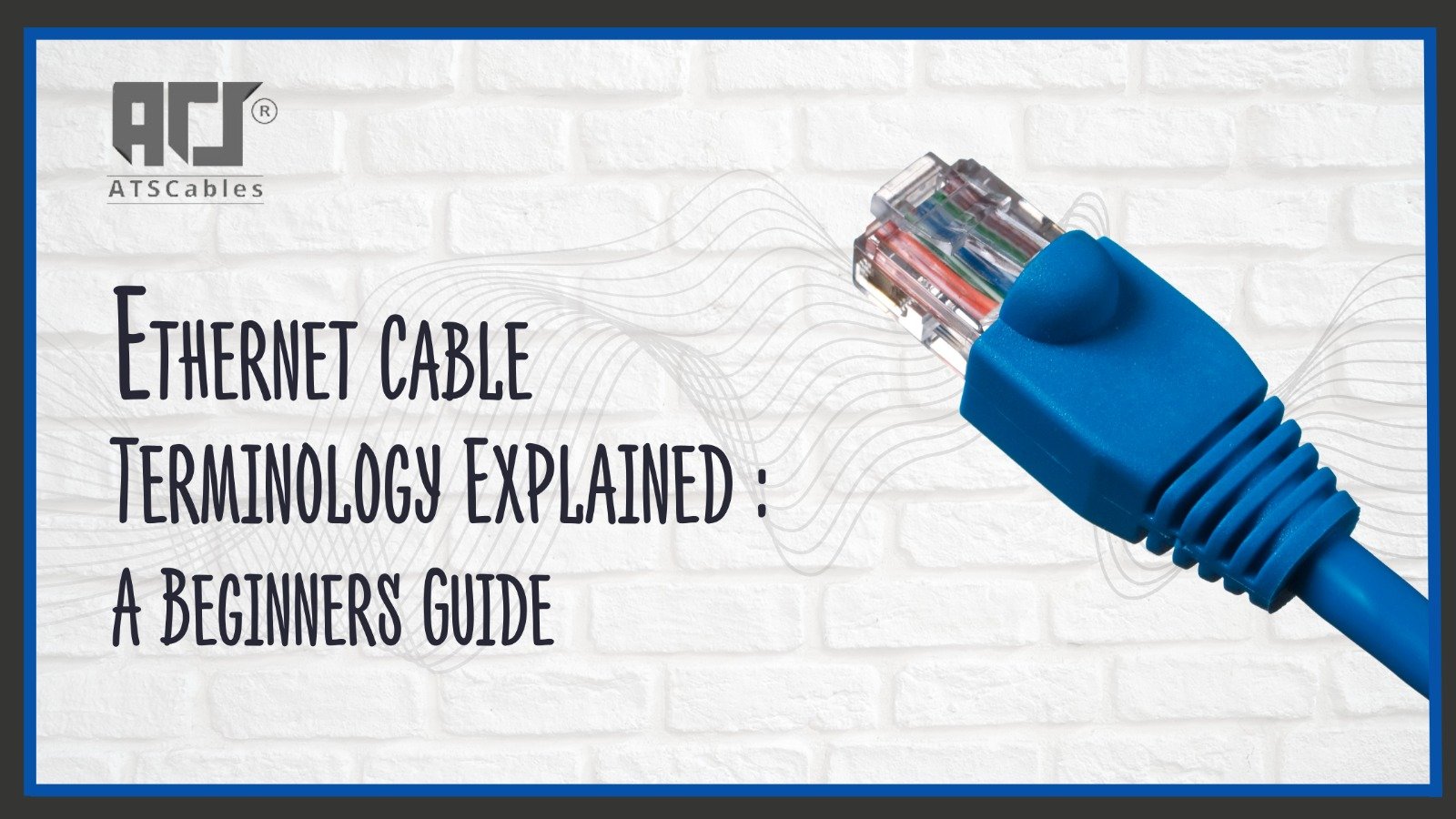
Your Guide to Ethernet Cable Terminologies and Jargon
The correct operation of wired internet through Ethernet cables needs proper terminology understanding. The term CAT represents classification in Ethernet cable technology. However, the terms can be a little more daunting.
Do LAN cable terminations have any resemblances with phone cable connectors? When conducting Ethernet cable research for your setup which CAT specification should you select?
Distinguishing the multiple types of Ethernet cables demands a clear comprehension of their functional role along with their speed capabilities as well as their connectivity standards. The guide explains all the necessary information in a straightforward manner to help you choose the best solution without any doubts.
Understanding Ethernet Cable Categories
Each version of Ethernet cable provides unique advantages for different purposes. You are already familiar with Ethernet cable cat designation since you have noticed “CAT5” or “CAT6” printed on cables before. Here are the different cables that you can find in the market:
- CAT3 is an older cable Ethernet category used for voice and low-speed data. Obsolete now.
- CAT5 was once the standard, and it supports speeds up to 100 Mbps.
- CAT5e is an upgrade over CAT5 that can handle gigabit speeds with less interference.
- CAT6 is faster and better than CAT5e, which supports speeds up to 10 Gbps over short distances.
- CAT6a is an improved version of CAT Ethernet, offering better shielding and reduced signal loss.
- CAT7 & CAT8 are High-performance cables mostly used in data centers.
If you’re asking, “What does CAT mean on Ethernet cables?” it’s short for “Category.” The higher the number, the better the performance.
Ethernet Cable Ends and Connectors
Cables don’t work without proper network cable ends. Whether you’re plugging into a modem, router, or PC, you need the right cable end terminal. Here are the connectors that you need to know:
- RJ45 is the standard end of an ethernet cable, and it’s that clear plastic plug with tiny metal contacts inside.
- RJ11 is smaller than RJ45 and is mainly used for telephone cable ends. Don’t mix these up.
- Ethernet biscuit is a type of wall jack for Ethernet connections.
- The ethernet cable endpiece is the part that physically plugs into a device.
- LAN cable small refers to shorter cables and is useful for tight spaces or temporary setups.
- Cable clips for ethernet cable are used to manage and secure cables along walls or desks.
- Got a loose or broken Ethernet cable clip? That might be why your connection drops.
Types of Ethernet Cables Based on Size and Design
Sometimes, a standard cable is too big for the job. That’s where variations like Ethernet slim cable and tiny Ethernet cable come in. Here is a quick overview of them:
- Slim ethernet cable is thinner than standard cables and good for tight spaces.
- Mini ethernet cable is a short-length cable, perfect for minimal setups.
- Ethernet cable mini is another name for LAN cable is small and commonly used for compact networking.
- The ethernet cable small head has a more compact connector that makes it easier to use in dense setups.
- Ethernet cable monster is not an official term, but some people use it to describe extra-thick, rugged cables.
These options work best when a regular CAT Ethernet cable is too bulky.
Wiring, Installation, and Setup Basics
Knowing how to handle an Ethernet cable 25 feet long (or longer) makes a difference in performance. Below are some common questions that come into your mind:
- How many wires in an Ethernet cable? Typically, eight wires are twisted into four pairs.
- What type of connector do you plug into a modem? RJ45 is the best.
- Is a networking cable the same as an Ethernet cable? Yes, in most cases.
- What do Ethernet cables do? They transmit internet and network data between devices.
- Ethernet wiring service: Professional installation to ensure a stable connection.
- Cable loop ends: Used to organize the excess cable and prevent tangles.
- What is a cable drop? A wired connection that extends from the main network source.
If you need structured cabling, search for a network cable technician near me.
Conclusion
Understanding Ethernet cables isn’t just for networking people who specialize in Ethernet connections. Knowing which cable to buy and how to use it saves time and frustration.
Whether you need a small Ethernet cord, a patch cable Ethernet, or help figuring out Ethernet cable wiring, getting the right one makes all the difference. Need high-quality Ethernet cables? Check out ATS Cables for reliable, long-lasting options.
FAQs
What does CAT mean for Ethernet?
The performance rating of Ethernet cables uses CAT abbreviations but improved speed and protection comes with higher ratings.
Which device accepts an Ethernet cable for a connection?
The RJ45 connector allows Ethernet cables to connect to modems or routers as well as computers and switches and network devices.
How to wire an Ethernet cord?
The T568A or T568B wiring standard should be used for correct color pairing which ensures connection stability while preventing signal interference.
What’s the difference between a standard and a slim Ethernet cable?
A slim Ethernet cable maintains its shape and size for easy handling in confined areas although the standard version provides resilient performance but takes up more space.
What is a cable drop?
Direct wired network connections between central network switches or modems to access points use the term cable drop to describe them.
keep connected
Get updates by subscribe our weekly newsletter

